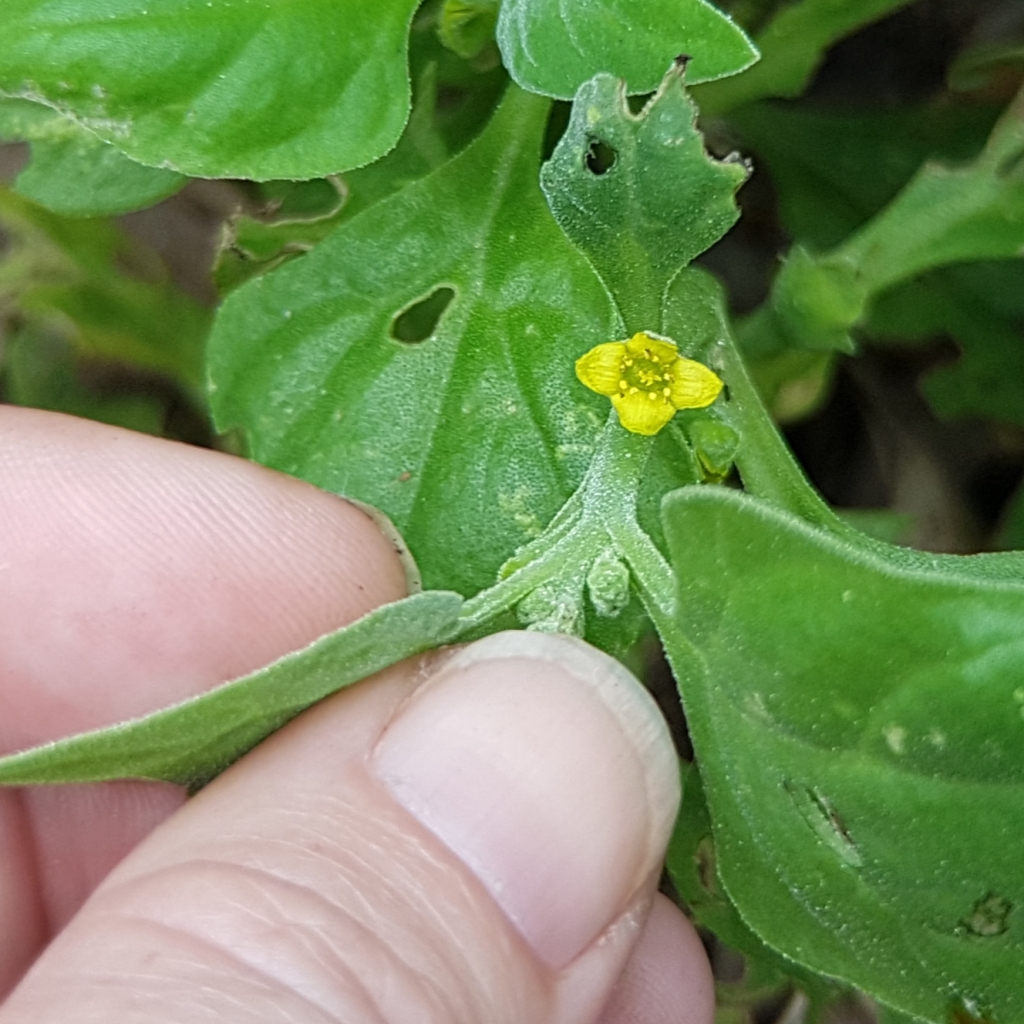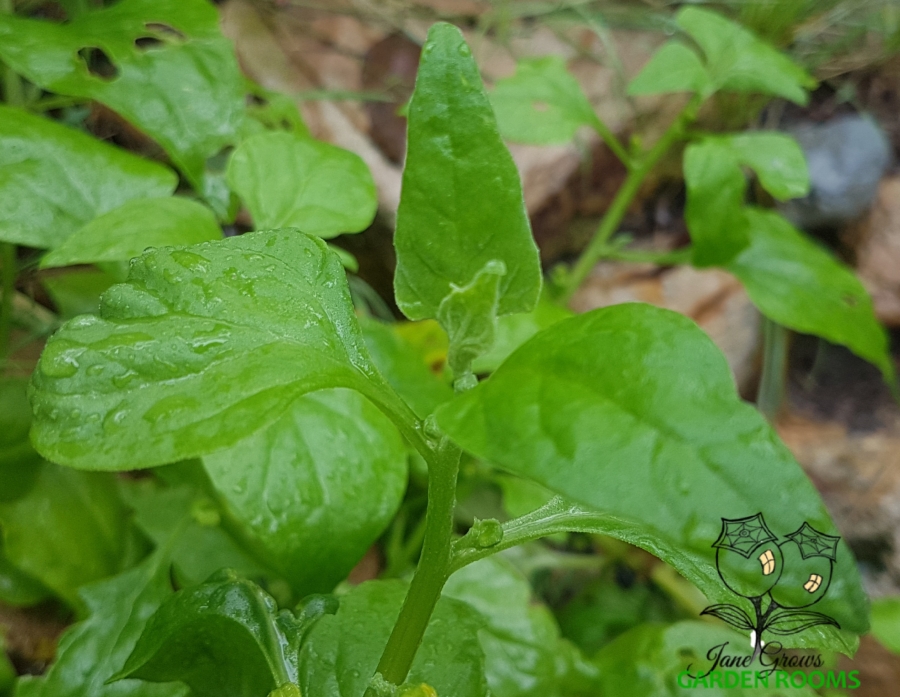
Also known as:
- Tetragonia tetragonoides
- New Zealand Spinach
- Botany Bay Spinach
- Sea Spinach

Growing conditions:
- Full sun/Part shade
- Tolerant of most soils/prefers moist, well-drained loam
- Harvest regularly for best growth
- Perennial in tropics and subtropics/annual in cooler zones
- 20cm high and 200cm wide
- Suitable for garden beds and rockeries/good gap filler/living mulch/hanging pots

Propagation:
- Soak seeds overnight in warm water before sowing
- Cuttings
- Plant in spring and summer in cool zones/all year in tropics and subtropics

This plant has been used as a Spinach substitute on the coasts of Australia, New Zealand and East Asia for centuries. There aren’t many records of it being consumed by Australian Aborigines, but it’s prevalent in Maori cooking in New Zealand. The Australian colonists used it and that use has continued in some coastal communities.
It grows in the liminal zone between sand and soil along coastlines. It’s a tough plant and will survive heavy predation, at least it does in my garden. Grasshoppers, caterpillars and nocturnal creatures eat this plant. I am not sure what eats mine in the night, but I suspect the local hares enjoy it. It’s well and truly part of the ecosystem on my block.
Like other forms of spinach it boasts high levels of oxalates and must be blanched or cooked before consumption. It can be used in stirfries, soups, stews, on pizza, in pesto or simply cooked up like spinach. I like mine stirfried with ginger, garlic and olive oil.
Organic Gardening Magazine says its small root system makes it great for planting around citrus and other trees that don’t like root competition. I have it in my rockery, raised beds and my contour bank. My experience is that the better the soil and moisture levels, the more vigorously they grow.
Like to motivate Jane to keep writing? Buy her a coffee using this link. Or help her monetise her YouTube channel by subscribing and/or watching some of her videos.
